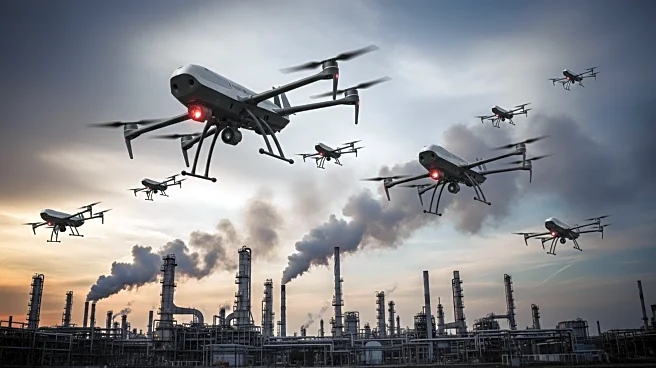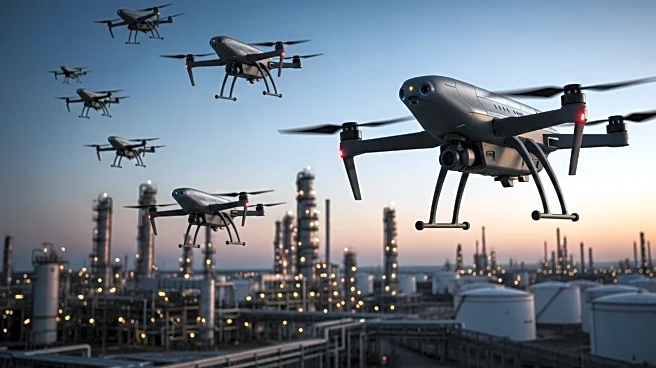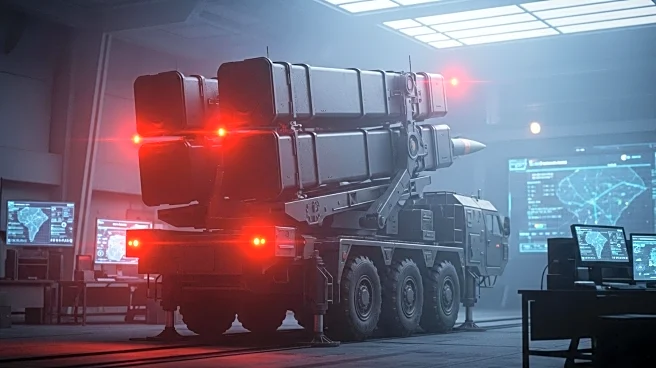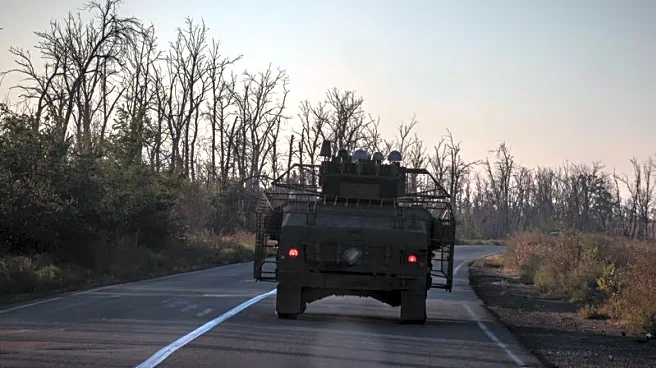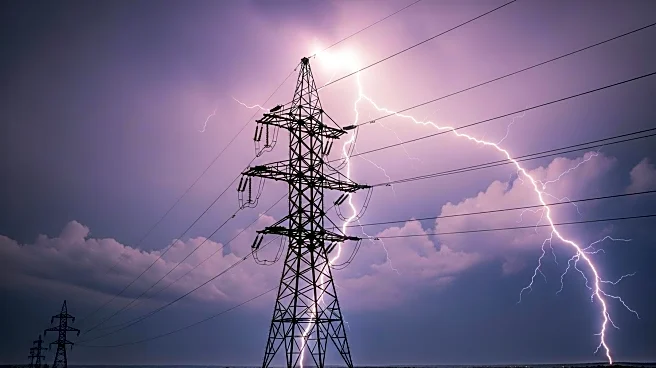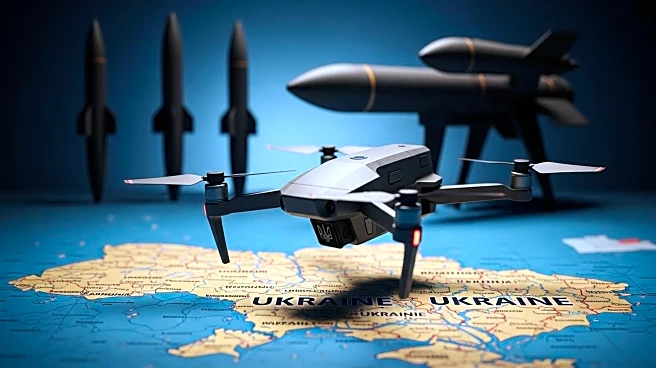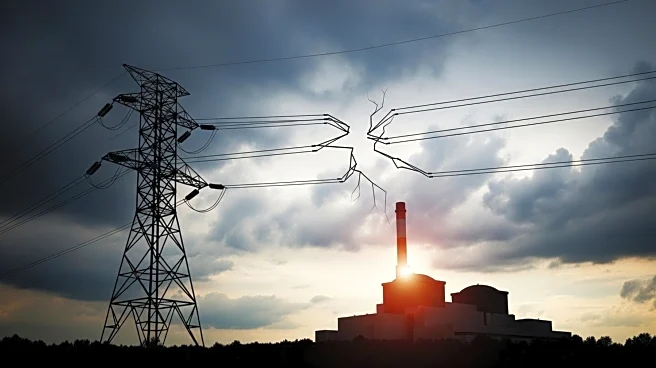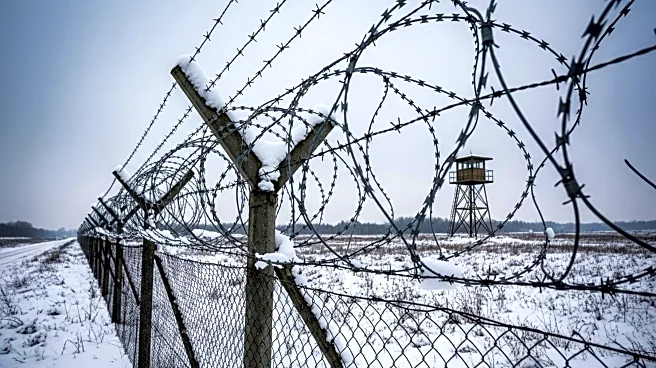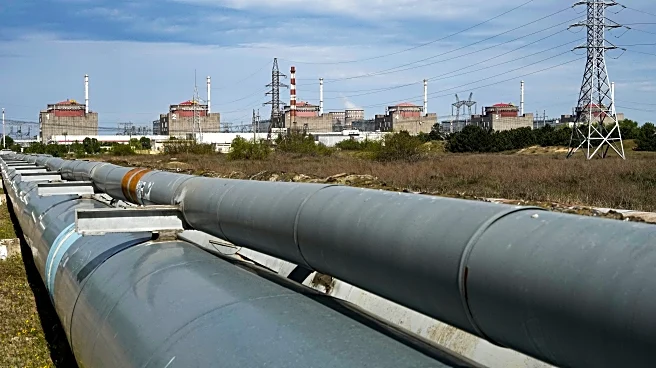What's Happening?
Recent Russian drone strikes have targeted Ukrainian gas extraction and processing facilities, as well as a farm in the Kharkiv region, resulting in significant damage. According to Ukraine's air force, Russia launched 381 drones and 25 missiles, impacting critical infrastructure in the Kharkiv and Poltava regions. A notable incident involved a drone strike on a farm in the Novovodolazka community, which led to a fire that killed approximately 13,000 pigs. The attack on the farm also injured a worker and destroyed eight stalls spanning over 140,000 square feet. These strikes are part of a broader Russian offensive against Ukraine's military-industrial complex and energy infrastructure, with Russia's Ministry of Defense claiming that all designated targets were hit.
Why It's Important?
The escalation in drone warfare by Russia against Ukraine's civilian infrastructure highlights the ongoing severity of the conflict. The targeting of gas facilities is particularly concerning as it threatens Ukraine's energy security, potentially disrupting the heating season and depriving citizens of warmth during winter. The destruction of agricultural resources, such as the farm in Kharkiv, further exacerbates the humanitarian impact, affecting food supply and economic stability. These actions underscore the strategic use of drones in modern warfare, aiming to weaken Ukraine's resilience by targeting essential services and resources.
What's Next?
Ukraine is likely to intensify its defensive measures and seek international support to counteract the ongoing drone attacks. The Ukrainian government may also focus on repairing and securing critical infrastructure to mitigate the impact on energy supply and agricultural production. International condemnation of Russia's tactics could lead to increased diplomatic pressure and potential sanctions. Additionally, Ukraine might enhance its own drone capabilities to retaliate and protect its assets more effectively.
Beyond the Headlines
The use of drones in the Russia-Ukraine conflict raises ethical and legal questions about the targeting of civilian infrastructure and the broader implications for international warfare norms. The destruction of agricultural and energy facilities not only impacts immediate resources but also poses long-term challenges for reconstruction and economic recovery. This situation may prompt discussions on the regulation of drone warfare and the protection of civilian assets in conflict zones.

